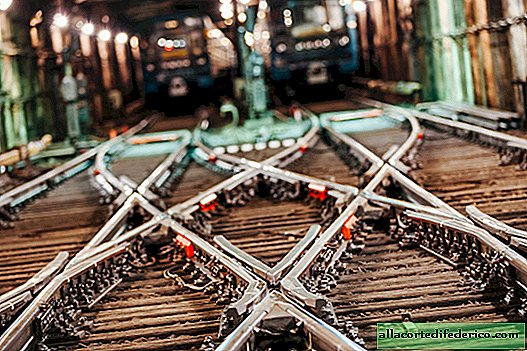What the metro passenger will not see
I regularly rent the construction of new metro stations, but I have rarely been to the backstage of the existing metro. Round-the-clock construction is one thing, the “metro mode” is another, when you can go out on the way only three hours a day, accompanied by an engineer from technical supervision.


It seems to be an ordinary angle, however, it is strictly forbidden to go out of the way when the contact rail is on. There he is, yellow - to the right under the platform.

What child did not dream to ride in the driver’s cab in childhood?

As Syutkin sang there: "Every day, 42 minutes underground ... Here and there, here and there."

Well, the main beauty of the metro is, of course, the tunnels!

I can shoot them endlessly.

Typically, along the same wall of the tunnel is the "low side" with voltages of 220 and 127V, tracker boxes for staff with sockets for all sorts of grinders, automatic telemechanics of train movements, water supply, optical fiber, and an audible warning system. From the "high side" where the contact rail passes, there are cables of a larger diameter. There are also railway boxes on this side, but already at 380V for more serious equipment that is usually rolled on trolleys - for example, a grinding machine or mixer. From above "under the ceiling" is the radio communication of the drivers. Bottom tray for collecting water.

Tunnel fault and pressure gates.

All these structures are carried through the window, and the passenger does not notice them.

And in these places, passengers are extremely rare - if they fall asleep and do not go to the final.

These are reversible dead ends, where rolling stock is turning and trains are sleeping at night.

Reverse deadlocks are found both at the end stations and at the “zone” ones. Usually these are two additional tracks located between the main tracks immediately behind the station.

When the train is standing in a sludge, all the car doors are open. At the same time, the main lighting is turned off, because of which the interior looks unusual.




Traffic in subway tunnels does not stop even at night when the voltage in the contact rail is turned off. Diesel locomotives do not need electricity. Anyone who gets down the subway in the morning in the first minutes after the opening can feel a faint smell of burning and exhaust - that’s all of them, motor vehicles.

For the movement of electric trains, direct current is used on a contact rail with a voltage of 825V.
At stations, a contact rail runs along the platform.

This is the same window as in the previous photo. Few people suspect what sometimes large spaces are hiding under the station platform.

Electric depot

Now in Moscow there are 15 electric depots (and maybe more).

















